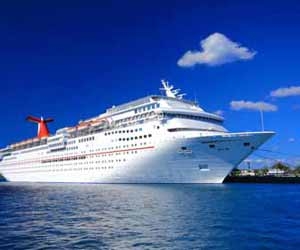Cruise Line Employment Glossary
The following is a list of definitions, some useful, some just for fun, to help you get hip to the terminology of your future working environment.

Berth
The ship’s placement at a dock; a margin of safety, as in, “allow a wide berth”; a bed
Bilge
The lowest part of the ship’s hull; location of most crew housing
Bridge
Where the steering and navigation equipment are located
Cardinal Points
North, South, East, and West
Companion Way
Stairway leading from the deck to passenger cabin areas
Crew Bar
Crew area near the bilge where standards of conduct and appearance are relaxed, and sometimes forgotten
Crew Cabin
Crew members are often berthed in separate quarters from the passengers. Accommodations depend on your position on board. Crew are expected to share cabins while officers are given single accommodations. Cabin stewards are assigned to crew and passengers areas in order to maintain fleet health and safety regulations. Crew cabins are small and used for little more than sleeping.
Crew Shore Leave
Specific hours granted to crew members for going ashore
Deck Department
The deck department is responsible for maintaining, navigating, and engineering the ship. All ships, cruise or cargo, have the same deck position requirements.
Draft
Distance from the waterline to the bilge; large cruise liners have a draft of about 7 meters
Entertainment Department
Entertainment department is responsible for passenger activities and entertainment, shows, games, lectures, and fitness, just to name a few.
Fore and Aft
Respectively, the front and back of the ship; together they refer to the entire ship
Freeboard
Distance from the waterline to the deck
Gangway
The placement of a platform or ramp at a gap in the gunwale or life lines for embarkation and disembarkation to a dock or tender. Gangways are used for convenience and security. Boarding or leaving the vessel by a means other than the gangway, without approval from the bridge, is a criminal offense.
Galley
Food preparation area
Gunwale
The removable section of the ship’s side below the deck level. Originally, gunwales were holes through which cannons were fired, hence the name.
Laminex
Crew I.D. card which doubles as a passport while in port
Mess
Officers and crew have a dining room and kitchen separate from the passenger dining room and kitchen. Crew mess is generally open from about 6:30 am to 11:00 pm to accommodate the schedules of every department. Food is generally not as fancy as that on the passenger menu but this depends on the crew chef.
Muster Drill
International maritime law requires all crew members to be placed at passenger emergency stations. During an emergency, passengers are assigned a muster station or meeting place such as a lounge or theater. Crew members assist and guide passengers to the muster station. In short, muster personnel act as crowd control in the event of an emergency. Hospitality and entertainment departments are responsible for coordinating this exercise.
Pooped
Smashed by a wave over the stern
Port and Starboard
The original fishing boats in the south of England were equipped with a “steer board” that hung over the side (unlike a tiller, which hangs over the stern). This solved the problem of nets getting caught in the steering apparatus when set off the stern of the vessel. Most fishermen were right handed, consequently placing the steer board over the right side. To save the steer board apparatus from damage while in port, the left side of the boat was tied to the dock, leaving the steer board away from the dock. To this day we refer to the right as starboard (from steer board) and left as port. A good way to keep them straight: “left” has the same number of letters as “port,” which is the left side of the boat when facing forward.
Ship’s Company
All those employed to work on the vessel
Slops
Crew store managed by volunteer crew members offering everything from snacks and toiletries to uniforms and coveralls
Stateroom
Passenger quarters
Tender
A small boat used to transport people and supplies to and from a ship at anchor. Most large ships carry their own tenders, which are maintained as lifeboats in the case of an emergency.
Three-sheets-to-the-wind
Drunk
Wardroom
Officer’s recreation area where standards of appearance and conduct are relaxed
Williwaw
A word of Native American origins which refers to a strong erratic gust of wind

